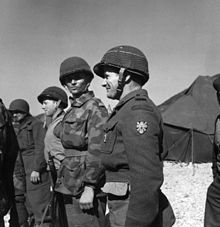
The Korean War was fought between North Korea and South Korea from 1950 to 1953. The war began on 25 June 1950 when North Korea invaded South Korea. The war ceased with an armistice on 27 July 1953. North Korea was supported by China and the Soviet Union while South Korea was supported by the United States and the United Nations (UN).

The Battle of the Imjin River, also known as the Battle of Solma-ri or Battle of Gloster Hill in South Korea, or as Battle of Xuemali in China, took place 22–25 April 1951 during the Korean War. Troops from the Chinese People's Volunteer Army (PVA) attacked United Nations Command (UN) positions on the lower Imjin River in an attempt to achieve a breakthrough and recapture the South Korean capital Seoul. The attack was part of the Chinese Spring Offensive, the aim of which was to regain the initiative on the battlefield after a series of successful UN counter-offensives in January–March 1951 had allowed UN forces to establish themselves beyond the 38th Parallel at the Kansas Line.

The Regiment van Heutsz is a line infantry regiment of the Royal Netherlands Army. The regiment was named after J.B. van Heutsz, a former Governor-General of the Dutch East Indies who successfully brought the Aceh War closer to an end, and was formed on July 1, 1950. It is notable for its service as part of the United Nations force sent to fight during the Korean War. It is still operational and has served tours as part of the ISAF Afghanistan mission.
The Battle of Yultong, also known as the Battle of Puluodong, Battle of Yuldong, or Battle of Yuldong-ri, took place during the Korean War. It was fought between aproximately 40,000 soldiers from elements of the Chinese People's Volunteer Army (PVA) 34th Division and 900 Filipino soldiers 10th Battalion Combat Team (BCT), north of Yeoncheon during April 22–23, 1951. The battle was part of the Chinese Spring Offensive.
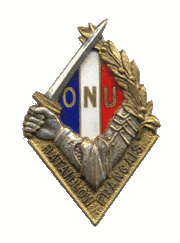
The French Battalion of the United Nations Organisation was a battalion of volunteers made up of active and reserve French military personnel sent to the Korean Peninsula as part of the UN force fighting in the Korean War.
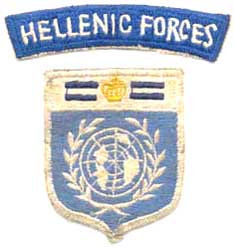
The Greek Expeditionary Force (GEF) in Korea was formed in response to the United Nations appeal for assistance in the Korean War. It comprised a reinforced Hellenic Army (HA) infantry battalion and the Royal Hellenic Air Force (RHAF) 13th flight of seven transport planes (C-47). Greece originally intended to send a brigade to Korea; upon consultation with the US, however, the expeditionary force was downgraded to a battalion attached to the US 1st Cavalry Division. The 13th Flight supported the US marine division and played an important role of evacuating the dead and the wounded. After the armistice, the RHAF unit withdrew in May 1955 and the HA unit in December 1955. Greece was the fifth largest troop contributor to U.N. Forces in Korea.

The involvement of New Zealand in the Korean War began in 1950 as a response to the United Nations Security Council's call for combat assistance in the erupting Korean War. New Zealand was one of the first nations to respond with support.

The Battle of White Horse Hill took place during the Korean War. White Horse Hill in the Iron Triangle, formed by Pyonggang at its peak and Gimhwa-eup and Cheorwon-eup at its base, a strategic transportation route in the central region of the Korean peninsula.

Australia entered the Korean War on 28 September, 1950; following the invasion of South Korea by North Korea. The war's origins began after Japan's defeat in World War II, which heralded the end to 35 years of Japanese occupation of the Korean Peninsula. The surrender of Japan to the Allied forces on 2 September 1945, led to the division of Korea into two countries, which were officially called the Democratic People's Republic of Korea (DPRK) and the Republic of Korea (ROK), with the DPRK being occupied by the Soviet Union, and the ROK, below the 38th Parallel, being occupied by the United States (US).

The Philippine Expeditionary Force to Korea (PEFTOK) (Spanish: Fuerza Expedicionaria Filipina a Corea or FEFC, Tagalog: Puwersang Expedisyonarya ng Pilipinas sa Korea or PEPK, Korean: 필리핀 한국 원정군; RR: Pillipin han-guk wonjeonggun) was the Philippine Army contingent of the United Nations forces that fought in the Korean War (1950–1953). The unit arrived in Korea in August 1950. It was composed of 1,468 troops, and was the fifth largest force under the United Nations Command. The PEFTOK took part in the Battle of Miudong (which was hailed as the first battle won by Filipino soldiers in a foreign soil) Battle of Yultong and the Battle of Hill Eerie. The unit operated alongside the United States 1st Cavalry Division, 3rd Infantry Division, 25th Infantry Division, and 45th Infantry Division.
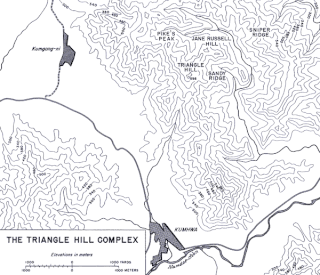
The Battle of Triangle Hill, also known as Operation Showdown or the Shangganling Campaign, was a protracted military engagement during the Korean War. The main combatants were two United Nations (UN) infantry divisions, with additional support from the United States Air Force, against elements of the Chinese People's Volunteer Army (PVA) 15th and 12th Corps. The battle was part of UN attempts to gain control of the "Iron Triangle" and took place from 14 October to 25 November 1952.
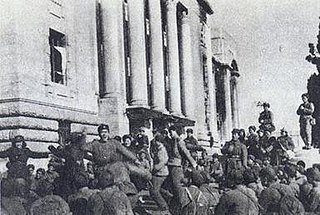
The Third Battle of Seoul was a battle of the Korean War, which took place from December 31, 1950, to January 7, 1951, around the South Korean capital of Seoul. It is also known as the Chinese New Year's Offensive, the January–Fourth Retreat or the Third Phase Campaign Western Sector.

The Volunteer Corps for Korea was a Belgium–Luxembourg military force sent to assist South Korea during the Korean War. A battalion-sized unit, it arrived in Korea in 1951 and remained after the cease-fire until 1955. Over the course of its existence, 3,171 Belgians and 78 Luxembourgers served in the unit.
The Battle of Haktang-ni was a skirmish in which elements of the People's Volunteer Army attacked an advanced position held by the Belgium–Luxembourg Battalion along a ridge-line known as "Broken Arrow" or "Broken Arrow Hill" between 9 and 13 October 1951.

The Kingdom of Thailand was one of the 21 countries who responded to the United Nations request to send troops to aid South Korea during the Korean War 1950–1953. As well as being one of the first countries to openly express its support for South Korea's cause, whilst also being one of the UN's larger contributors to the war. Thai support was important to battles determining the outcome of the war, such as the Third Battle of Seoul.

The Chinese spring offensive, also known as the Chinese Fifth Phase Offensive, was a military operation conducted by the Chinese People's Volunteer Army (PVA) during the Korean War. Mobilizing three field armies totaling 700,000 men for the operation, the Chinese command conducted their largest offensive operation since their Second Phase Offensive in November and December 1950. The operation took place in the summer of 1951 and aimed at permanently driving the United Nations Command (UN) forces off the Korean peninsula.
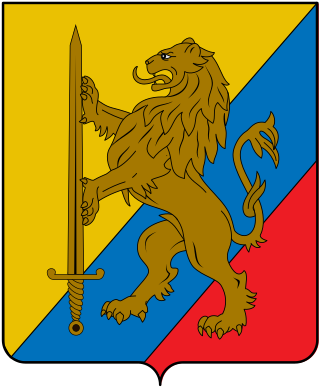
The Colombian Battalion was an infantry battalion of the Colombian Army that served under United Nations Command during the Korean War from 1951 to 1954. The first Colombian military unit to serve in Asia, the battalion was attached to the U.S. 7th Infantry Division and 25th Infantry Divisions.

Operation Dauntless was a military operation performed by the United Nations Command (UN) during the Korean War designed to advance the UN lines to positions 10–20 miles (16–32 km) north of the 38th Parallel designated the Wyoming Line which would threaten the Chinese and North Korean logistics hub marked out by the towns of Pyonggang, Ch'orwon and Gimhwa-eup named the Iron Triangle. The operation immediately succeeded Operation Rugged which took the UN forces to the Kansas Line 2 to 6 miles north of the 38th Parallel. The operation was initially successful, reaching its initial objectives, but was brought to a halt by the Chinese Spring Offensive on 22 April 1951.
After the outbreak of Korean War on 25 June 1950, 16 countries : United States, United Kingdom, Australia, Netherlands, Canada, France, New Zealand, Philippines, Turkey, Thailand, South Africa, Greece, Belgium, Luxembourg, Ethiopia and Colombia provided combat troops for South Korea and they organized the United Nations Forces.
The United Kingdom was involved in the Korean War between 25 June 1950 and 27 July 1953. 56,000 British troops participated on the side of the United Nations force.
